Home>Garden Essentials>What Is A Good Location To Do Crop Rotation
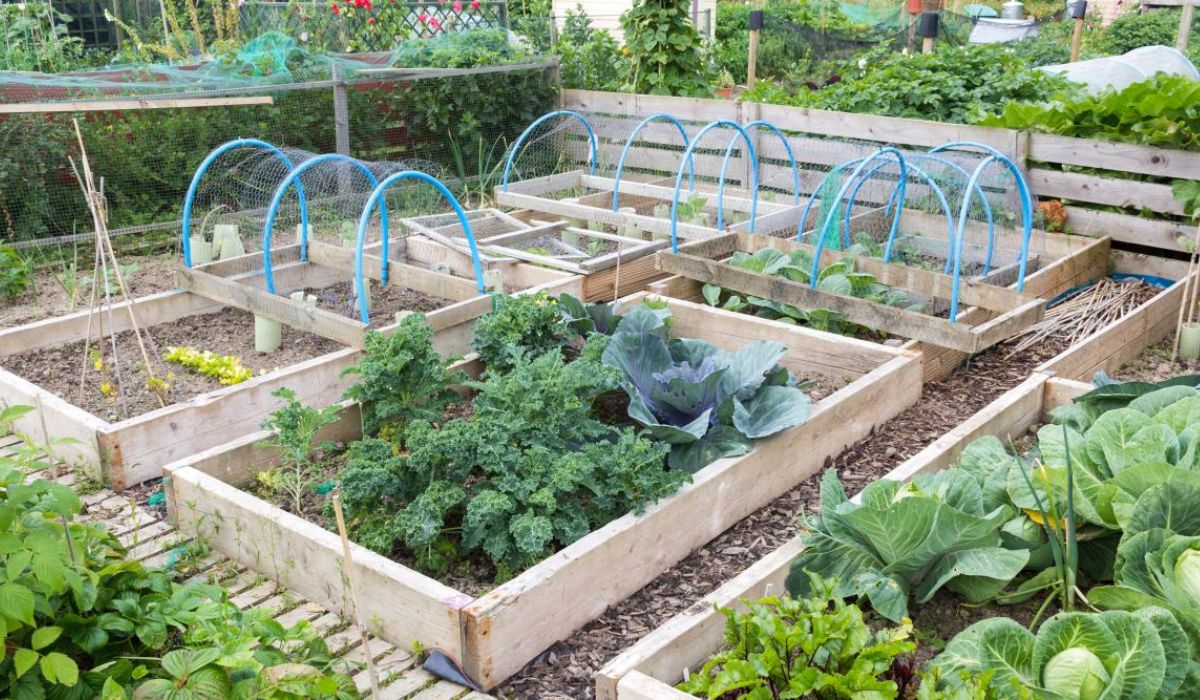

Garden Essentials
What Is A Good Location To Do Crop Rotation
Modified: March 16, 2024
Discover the best location for garden crop rotation and boost your yields. Find out why a good location is crucial for successful rotation.
(Many of the links in this article redirect to a specific reviewed product. Your purchase of these products through affiliate links helps to generate commission for Storables.com, at no extra cost. Learn more)
Introduction
Welcome to the world of crop rotation! If you’re a gardener or a farmer, chances are you’ve heard about the importance of crop rotation in sustainable agriculture. But what exactly is crop rotation and why is it considered a crucial practice?
Crop rotation is the process of growing different crops in a specific sequence on a piece of land over successive planting seasons. It involves the rotation of crops with distinct growing requirements, such as nutrient needs, disease resistance, and pests control. This practice aims to improve soil health, prevent pest and disease buildup, maintain nutrient balance, and enhance overall crop productivity.
Why is crop rotation so important? Well, let’s delve deeper into its benefits. Firstly, crop rotation can help break the life cycle of pests, weeds, and diseases. By planting different crops each season, you disrupt the habitat and food source of these undesired organisms, reducing their population and preventing the concentration of specific problems.
Secondly, crop rotation aids in managing soil fertility. Different crops have varying nutrient requirements, and by rotating crops, you can prevent the depletion of specific nutrients. For example, leguminous crops such as beans and peas have the ability to fix nitrogen in the soil, replenishing this essential nutrient for the subsequent crop.
Crop rotation also plays a vital role in weed control. Weeds often have specific preferences for certain crops, and by altering the crop types each season, you can prevent the buildup of weed communities. Additionally, certain crops, like cover crops, can also suppress weed growth through shading and competition for resources.
Moreover, crop rotation contributes to overall soil health. Different crops have different root systems, some with deep taproots and others with fibrous roots. By rotating crops with varying root structures, you can enhance soil structure, water infiltration, and nutrient cycling, leading to healthier and more resilient soil.
Now that we understand the importance of crop rotation, let’s explore the factors to consider when implementing this practice. From soil quality and climate to pest management and field layout, there are several key aspects to focus on for successful crop rotation. So, let’s dive into the details and start reaping the benefits of this essential agricultural practice!
Key Takeaways:
- Crop rotation is like a superhero for farms and gardens, fighting off pests, boosting soil health, and keeping plants happy. It’s like a secret weapon for sustainable and productive farming!
- By changing up the crops in a specific order, farmers and gardeners can keep their soil healthy, control pests, and adapt to market demands. It’s like a strategic game plan for a successful and resilient farm!
Read more: What Is A Good Crop Rotation For Omaha
Importance of Crop Rotation
Crop rotation is a fundamental practice in sustainable agriculture, and its importance cannot be overstated. Let’s explore the reasons why crop rotation is crucial for the long-term health and productivity of your garden or farm.
1. Pest and Disease Management: One of the main reasons for implementing crop rotation is to control pests and diseases. Certain pests and pathogens have specific host plants they target, and by changing the crop each season, you can disrupt their life cycle and reduce their impact. This helps minimize the need for chemical pesticides and promotes a more ecological approach to pest management.
2. Nutrient Cycling and Soil Fertility: Different crops have varying nutrient requirements. Planting the same crop in the same location year after year can deplete specific nutrients, leading to imbalances in the soil. By rotating crops with different nutrient needs, you allow for better nutrient cycling and replenishment, promoting soil fertility and reducing the reliance on synthetic fertilizers.
3. Weed Control: Weeds can be a significant challenge for any farmer or gardener. Certain weeds are specifically adapted to thrive in particular crop systems. By implementing crop rotation, you can break the weed life cycle and reduce the dominance of specific weed species. Additionally, some crops, such as cover crops, can actively suppress weed growth, further aiding in weed control.
4. Soil Health and Structure: Growing the same crop repeatedly in the same place can lead to soil compaction and a decrease in organic matter. Crop rotation helps improve soil structure by incorporating crops with different root systems. For example, deep-rooted crops can break up compacted soil, while fibrous-rooted crops can add organic matter and improve water infiltration. This results in healthier soil that supports better plant growth and overall ecosystem function.
5. Biodiversity and Ecosystem Services: Crop rotation promotes biodiversity on your farm or in your garden. By growing a variety of crops, you provide habitat and food sources for different organisms, including beneficial insects, birds, and soil microorganisms. These organisms play crucial roles in pollination, pest control, and nutrient cycling, enhancing the overall health and resilience of your agricultural system.
6. Sustainable Farming Practices: Crop rotation is a cornerstone of sustainable farming practices. It reduces the need for synthetic inputs like pesticides and fertilizers, reduces soil erosion and runoff, conserves water, and promotes the overall ecological balance of your farm. By implementing crop rotation, you are taking a step towards more environmentally friendly and sustainable food production.
Now that we understand the importance of crop rotation, let’s dive into the factors you need to consider when implementing this practice. By taking these factors into account, you can create an effective and tailored crop rotation plan that suits your specific growing conditions and goals.
Factors to Consider for Crop Rotation
Implementing an effective crop rotation plan requires careful consideration of several factors. These factors will help ensure that your crop rotation is optimized for your specific growing conditions and goals. Let’s explore the key factors to consider:
1. Soil Quality and Composition: Assessing your soil’s composition, fertility, and pH levels is crucial for determining appropriate crop rotations. Different crops have varying nutrient and pH requirements, so understanding your soil’s characteristics will help you select crops that are well-suited to your soil conditions. Additionally, knowing your soil’s moisture retention capabilities and drainage patterns will help you choose crops that thrive in your specific soil type.
2. Climate and Weather Conditions: Your region’s climate plays a significant role in crop selection and rotation. Consider factors such as average temperatures, rainfall patterns, and the length of the growing season. Certain crops thrive in cooler temperatures, while others require long, warm summers. Understanding your climate will help determine which crops are best suited for each season and ensure optimum growth and yield.
3. Pest and Disease Management: Take into account the prevalent pests and diseases in your area. Some crops are more susceptible to specific pests and diseases, while others have natural resistance or repelling properties. Incorporating crops with different pest and disease vulnerabilities can help reduce the risk of buildup and allow for effective pest and disease management.
4. Crop Types and Diversity: Consider the different types of crops available and their rotations. Different crop families have varying nutrient needs and pest vulnerabilities. It is essential to choose a diverse range of crops with different growth habits, root structures, and nutrient requirements to promote soil health and reduce pest and disease pressure.
5. Field Size and Layout: The size and layout of your fields will impact the logistics of crop rotation. Larger fields may allow for more rotation options and the ability to grow larger crops. Consider the layout of irrigation systems, equipment access, and ease of managing and harvesting different crops within your field layout.
6. Integration with Livestock Farming: If you have livestock on your farm, integrating animal grazing or manure application into your crop rotation plan can provide additional benefits. Some crops benefit from the nutrient-rich manure produced by animals, while allowing livestock to graze on certain crops after harvest can help suppress weeds and improve soil structure. Consider how livestock can enhance your crop rotation system.
7. Sustainability Goals: Your sustainability goals, such as reducing pesticide use or promoting organic farming practices, can also influence your crop rotation decisions. Selecting crop rotations that align with your sustainability objectives will help you achieve long-term environmental and agricultural goals.
By considering these factors, you can create a well-rounded and effective crop rotation plan that maximizes the benefits and productivity of your farm or garden. Remember to regularly evaluate and adapt your crop rotation plan based on the results and feedback you observe from each planting season.
Now that we have explored the factors to consider, let’s dive into the different crop rotation systems commonly used in agriculture.
Soil Quality and Composition
The quality and composition of your soil are vital factors to consider when implementing crop rotation. Understanding the characteristics of your soil will help you make informed decisions about the types of crops to grow and the appropriate rotation schedule. Let’s explore some key aspects of soil quality and composition to consider:
1. Nutrient Levels: Assessing the nutrient levels in your soil is essential for determining which crops will thrive and ensuring a balanced fertility program. Conduct a soil test to analyze the levels of essential nutrients such as nitrogen, phosphorus, and potassium. This will help you select crops that have compatible nutrient requirements to maintain optimal soil fertility throughout the rotation.
2. pH Levels: Soil pH affects nutrient availability to plants. Some crops prefer acidic soil, while others thrive in alkaline conditions. Test your soil’s pH level to determine its acidity or alkalinity, and choose crops that are compatible with your soil’s pH range. If necessary, you can amend the soil pH by adding lime to raise it or sulfur to lower it.
3. Organic Matter Content: The organic matter content of your soil is a vital indicator of its overall health and fertility. Organic matter improves soil structure, water-holding capacity, and nutrient retention. It also promotes the activity of beneficial soil organisms. Consider incorporating cover crops or organic amendments like compost to increase organic matter content in your soil.
4. Soil Texture: Soil texture refers to the relative proportions of sand, silt, and clay particles in your soil. Sandy soils drain quickly but may require more frequent irrigation and fertilization. Clay soils have excellent water-holding capacity but may be prone to compaction and poor drainage. Loam soils are considered ideal as they offer a balance of drainage and water retention. Understanding your soil texture will help you select crops that are well-suited to your specific soil type.
5. Soil Structure: Soil structure refers to the way soil particles are arranged and aggregated. Good soil structure promotes root growth, water movement, and nutrient availability. If your soil is compacted, consider incorporating cover crops or using practices like minimum tillage to improve soil structure over time.
6. Drainage: Proper soil drainage is crucial for plant health and growth. Excess water can lead to root rot and nutrient leaching, while insufficient drainage can cause waterlogging and oxygen deprivation. Ensure that your soil has appropriate drainage characteristics for the crops you plan to grow. Implementing raised beds or improving drainage through grading can help address drainage issues if necessary.
7. Soil Health Indicators: Several indicators can give you insights into the overall health of your soil. These include earthworm activity, presence of beneficial soil fungi, soil moisture levels, and compaction. Regularly monitor these indicators to gauge the health of your soil and make necessary adjustments to your crop rotation plan.
By understanding the soil quality and composition of your farm or garden, you can make informed decisions about crop selection and rotation. Remember that soil conditions can vary across different areas of your property, so it’s essential to conduct soil tests and assessments in multiple locations.
Now that we’ve covered soil quality and composition, let’s explore another crucial factor to consider in crop rotation – climate and weather conditions.
Climate and Weather Conditions
When it comes to crop rotation, considering the climate and weather conditions of your region is essential for successful planning and planting. Different crops have varying requirements in terms of temperature, rainfall, and length of growing season. Let’s explore how climate and weather conditions influence crop rotation:
1. Temperature: The temperature range in your region plays a significant role in determining which crops can thrive. Some crops, like tomatoes and peppers, require warm temperatures for successful growth and fruit development. Others, like cabbage and spinach, prefer cooler temperatures. Understanding the temperature patterns in your area will help you select the appropriate crops for each season and ensure optimum growth and yield.
2. Frost Dates: Frost dates indicate the average dates of the first and last frosts in your region. Frost can damage or kill sensitive crops, so it is crucial to plan your crop rotation accordingly. Warm-season crops that are susceptible to frost, such as tomatoes and peppers, should be planted after the last frost date. On the other hand, cool-season crops like lettuce and peas can be planted earlier, allowing them to mature before the first frost in the fall.
3. Rainfall Patterns: The amount and distribution of rainfall in your area are crucial considerations when planning your crop rotation. Some crops, like rice and watermelon, require ample water throughout the growing season, while others, like cacti and succulents, are drought-tolerant. Understanding the rainfall patterns in your region will help you choose crops that are well-suited to the available water supply and avoid water-related crop stress issues.
4. Humidity Levels: Humidity can impact the growth and health of plants. High humidity levels can increase the risk of fungal diseases and affect pollination in certain crops. Consider the humidity levels in your area and select crops that can tolerate or thrive in the prevailing conditions. Adequate spacing and good airflow between plants can also help manage humidity levels and minimize disease risks.
5. Growing Season Length: The length of your growing season, typically defined by the number of frost-free days, affects the choice of crops for rotation. Longer growing seasons allow for the cultivation of a broader range of crops, including those with longer maturation times. In regions with shorter growing seasons, focus on selecting crops with shorter maturity dates or utilize techniques like starting seeds indoors or using season extension methods to maximize productivity.
6. Microclimates: Microclimates are small-scale variations in climate within a larger region. Factors like topography, proximity to bodies of water, and sun exposure can create microclimates with slightly different temperature and moisture conditions. Take note of any microclimates on your property and consider them when selecting crops for rotation. Some areas may be more suitable for heat-loving crops, while others may provide cooler conditions for shade-loving plants.
7. Climate Change Considerations: With changing climate patterns, it is important to also consider long-term climate trends when planning your crop rotation. If your region is experiencing shifts in temperature or rainfall patterns, you may need to adjust your crop selection and rotation to adapt to the changing conditions. Stay informed about climate projections for your area and explore crops that are better suited to the anticipated future conditions.
By considering the climate and weather conditions of your region, you can choose crops that are well-suited to your specific growing conditions. This will maximize the chances of success and ensure optimal growth and yields throughout your crop rotation. Now let’s move on to another factor to consider in crop rotation – pest and disease management.
Read more: What Does Crop Rotation Do
Pest and Disease Management
Pest and disease management is an important aspect to consider when planning your crop rotation. By implementing an effective rotation strategy, you can minimize the build-up of pests and diseases, reduce the need for chemical controls, and promote a healthier and more sustainable growing environment. Let’s explore some key considerations for pest and disease management in crop rotation:
1. Pest Life Cycles: Understanding the life cycles of pests is crucial for effective pest management. Different pest species may have specific target crops or stages of development. By rotating crops, you disrupt the habitat and food source of pests, making it more difficult for them to establish and reproduce. Identify pests that commonly affect your crops and plan your rotation to minimize their impact.
2. Host Plant Specificity: Certain pests have a preference for specific crops, known as host plant specificity. By rotating crops, you can break the pest’s life cycle and interrupt their ability to find host plants. This reduces the likelihood of pests becoming established and causing damage. Consider the host preferences of pests in your area and design your rotation to avoid planting the same crop in consecutive seasons.
3. Disease Control: Crop rotation is an effective strategy for managing soil-borne diseases. Some diseases, like certain fungal pathogens, can persist in the soil and infect crops over multiple seasons. By rotating crops, you decrease the likelihood of diseases building up in the soil and infecting susceptible plants. Choose crops that are less susceptible to specific diseases and avoid planting members of the same plant family in the same area for consecutive seasons.
4. Beneficial Insects: In addition to managing pests, crop rotation can also promote the presence of beneficial insects that help control pests naturally. By planting a diverse range of crops, you provide habitat and food sources for beneficial insects, including pollinators and predators. These beneficial insects can help keep pest populations in check, reducing the need for chemical pesticides.
5. Trap Crops and Trap Plants: Trap crops and trap plants are crops that are highly attractive to certain pests. By strategically planting these crops as part of your rotation, you can lure pests away from your main crops and concentrate them in specific areas. This allows for targeted pest control measures, such as insect netting or the use of natural predators or traps.
6. Crop Diversity: Incorporating a diverse range of crops in your rotation increases overall biodiversity on your farm or garden. This helps create a more resilient ecosystem where pests and diseases are less likely to become established. Different crops have different growth habits, chemical profiles, and natural defenses, making it more difficult for pests and diseases to adapt and cause widespread damage.
7. Monitoring and Early Intervention: Regularly monitor your crops for signs of pests or diseases and take action at the earliest signs of infestation. By implementing proactive measures, such as removing affected plants, pruning infected areas, or applying organic pest control methods, you can prevent the spread of pests and diseases and minimize their impact on your crops.
By considering these factors, you can effectively manage pests and diseases through crop rotation. Remember to document any pest or disease issues encountered during each season and make adjustments to your rotation plan if necessary. Now let’s delve into different crop rotation systems commonly used in agriculture.
Crop Types and Diversity
Crop types and diversity play a crucial role in successful crop rotation. Choosing a diverse range of crops and incorporating different plant families into your rotation can bring numerous benefits to your farm or garden. Let’s explore why crop types and diversity are important considerations:
1. Nutrient Management: Different crops have varying nutrient requirements. By incorporating a variety of crops into your rotation, you can ensure better nutrient cycling and prevent the depletion of specific nutrients in the soil. Certain crops, like legumes, have the ability to fix nitrogen from the atmosphere, enriching the soil for subsequent crops. This reduces dependency on synthetic fertilizers and promotes more sustainable nutrient management.
2. Pest and Disease Control: Planting a diverse range of crops disrupts the habitat and food source of pests and diseases. Different crops have varying susceptibility to pests and diseases, and by rotating crops, you can reduce the risk of buildup and outbreaks. Planting crops that are naturally resistant or repellent to specific pests and diseases can further enhance pest management in your rotation system.
3. Weed Suppression: Crop diversity can also help control weeds. Some crops, such as cover crops or dense-growing plants, can effectively suppress weed growth by shading the soil and competing for resources. Introducing cover crops or crops with dense foliage into your rotation can help smother weeds and reduce the need for herbicides.
4. Soil Health and Structure: Different crops have varying root systems, and by diversifying your crop rotation, you can improve soil health and structure. Plants with deep taproots can help break up compacted soil, improve water infiltration, and access deeper soil nutrients. On the other hand, crops with fibrous roots can add organic matter and improve soil aeration. These improvements promote better soil structure, water-holding capacity, and overall soil health.
5. Pollination and Beneficial Insects: Crop diversity encourages a wider range of pollinators and beneficial insects to visit your farm or garden. Different crops have varying bloom times, colors, and scents that attract diverse pollinator species. Promoting pollinator habitat through crop diversity enhances pollination rates, leading to better fruit set and yields. Additionally, beneficial insects that prey on garden pests are attracted to diverse crop systems, helping control pest populations naturally.
6. Market Demand and Crop Rotation: Diversity in crop types allows you to cater to different market demands and preferences. Growing a variety of crops can help you tap into niche markets and diversify your income streams. By carefully selecting crops that are in high demand or have unique qualities, you can optimize your farm’s profitability and sustainability.
7. Cultural and Culinary Interest: Crop diversity adds excitement to your farm or garden and opens up opportunities for culinary exploration and cultural experiences. Growing a diverse range of crops allows you to experiment with new flavors, textures, and recipes. It also contributes to the preservation of traditional and heirloom varieties, maintaining a rich agricultural heritage.
By prioritizing crop diversity and incorporating a wide range of crops into your rotation, you can improve overall farm resilience, sustainability, and profitability. Consider the specific growing requirements and interrelationships between crops when designing your rotation plan. Now let’s explore different crop rotation systems commonly used in agriculture.
Field Size and Layout
The size and layout of your fields play a crucial role in the effectiveness of your crop rotation plan. Field size and layout determine the logistics of crop rotation, impact crop selection, and influence overall farm efficiency. Let’s delve into the key considerations for field size and layout in crop rotation:
1. Field Size: The size of your fields affects the options and flexibility you have for crop rotation. Larger fields offer more opportunities for crop diversification and allow for the rotation of larger crops that require more space. In contrast, smaller fields may limit your crop options and rotation possibilities. Consider the available land and design your rotation plan based on the size and number of your fields.
2. Crop Rotation Zones: Dividing your farm into rotation zones based on field size and soil characteristics can enhance crop rotation efficiency. Grouping fields with similar soil types, fertility levels, or drainage patterns can help you tailor crop selections and cultural practices for each zone. This zoning approach allows for better management and optimization of each crop’s specific needs within the rotation.
3. Equipment Access: Field layout impacts the efficiency of operations and equipment access. Plan field layouts that ensure ease of movement and minimize unnecessary traffic. Consider the location of access roads, irrigation systems, and storage areas to streamline field operations during planting, harvesting, and other field activities.
4. Irrigation Management: Field size and layout are important considerations when planning irrigation systems. Depending on the irrigation method used, such as overhead sprinklers or drip irrigation, field size affects water distribution and efficiency. Dividing fields into manageable irrigation zones can help optimize water delivery and minimize water waste.
5. Pest and Disease Management: Field size and layout can impact pest and disease management efforts. Larger fields may require additional vigilance in monitoring and control measures to minimize the spread of pests and diseases. Consider field size in relation to the prevalence of specific pests in your area and plan rotation accordingly to reduce pest build-up and the risk of disease outbreaks.
6. Crop Protection: If you have specific crop protection measures in place, such as insect netting or bird netting, field size and layout are important factors to consider. Segmenting fields into manageable sizes allows for more effective and targeted application of crop protection measures. It also helps prevent the spread of pests between crops in different fields.
7. Soil Management: Field size and layout influence soil management practices. The layout can impact how efficiently you implement soil amendments, cover crop planting, and soil conservation practices like contour plowing or strip cropping. Adjust field size and layout to accommodate soil management practices that promote soil health and fertility within your crop rotation plan.
By carefully considering field size and layout, you can optimize your crop rotation plan and improve farm efficiency. Remember to evaluate the practicality and scalability of your field layout strategy based on available resources and labor. Now, let’s explore another factor to consider – integration with livestock farming.
A good location for crop rotation is a field with well-drained soil and plenty of sunlight. It’s also important to choose a location with a variety of crops to rotate, to help prevent soil depletion and pest build-up.
Integration with Livestock Farming
Integrating livestock farming with crop rotation can bring numerous benefits to your farm. Livestock can contribute to soil fertility, provide additional income streams, and enhance the overall sustainability of your agricultural system. Let’s explore the key considerations for integrating livestock farming into your crop rotation:
1. Nutrient Cycling: Livestock, such as cows or chickens, produce manure that can be utilized as a valuable source of nutrients for your crops. Integrating livestock into your crop rotation allows for the direct application of manure to fields, improving soil fertility and reducing the reliance on synthetic fertilizers. The nutrients in livestock manure contribute to healthier plants and more productive crops.
2. Cover Crops and Grazing: Livestock can be integrated into a crop rotation system by utilizing cover crops for grazing. Certain cover crops, like oats or clover, can provide valuable forage for livestock while enhancing soil health and preventing erosion during fallow periods. Grazing livestock on cover crops allows for efficient biomass utilization, reducing the need to mow or terminate the cover crops mechanically.
3. Pest and Weed Control: Livestock can also contribute to pest and weed control within your crop rotation. Some livestock species, such as chickens or ducks, have a voracious appetite for insects and weed seeds. By strategically integrating livestock grazing, you can reduce pest and weed pressure without relying solely on chemical controls.
4. Diversification and Income Streams: Integrating livestock into your crop rotation provides an opportunity to diversify your farm’s income streams. Livestock products, such as meat, eggs, or dairy, can be sold directly to consumers or restaurants, offering an additional source of revenue. The diversification of your farm’s products can help mitigate risks and fluctuations in crop markets.
5. Soil Structure and Health: Livestock grazing can improve soil structure by compacting the soil, helping to break up compaction layers and improve water infiltration. The action of livestock’s hooves also helps incorporate organic matter into the soil, promoting soil health and microbial activity. Incorporating livestock into your crop rotation benefits the overall ecosystem and supports sustained soil health.
6. Integrated Pest Management: Livestock can play a role in integrated pest management by actively controlling pests. For example, chickens can be utilized to forage for insects in vegetable fields or orchards, reducing pest populations. Introducing livestock into your crop rotation helps balance the ecological dynamics and minimize the reliance on chemical insecticides.
7. Nutrient Management Planning: Consider the nutrient requirements of your livestock when planning your crop rotation schedule. Evaluate the capacity of your livestock to produce manure based on their numbers and diet. Coordinate the application of manure with the nutrient needs of specific crops to ensure efficient nutrient utilization and prevent over-application.
Integrating livestock farming with crop rotation establishes a mutually beneficial relationship between crops and animals. It enhances nutrient cycling, improves soil health, and opens up additional income opportunities. However, it is important to maintain proper management practices to ensure the well-being of both livestock and crops.
Now that we’ve explored the integration of livestock farming, let’s delve into various crop rotation systems commonly used in agriculture.
Read more: What Was Crop Rotation?
Common Crop Rotation Systems
There are various crop rotation systems employed in agriculture, each with its own unique benefits and considerations. These systems are designed to optimize soil health, nutrient cycling, pest management, and overall crop productivity. Let’s explore some of the most common crop rotation systems:
1. Sequential Crop Rotation: Sequential crop rotation involves growing different crops in a specific order, typically based on their nutrient requirements or growth habits. This system aims to maximize nutrient cycling and minimize disease and pest buildup. For example, a typical sequence could involve planting nitrogen-fixing legumes one year, followed by a leafy green crop the next year that benefits from the nitrogen enrichment.
2. Spatial Crop Rotation: In spatial crop rotation, different crops are grown simultaneously in distinct spatial zones within a field or farm. This system is particularly useful for managing diseases and pests with specific host preferences. By physically separating susceptible crops from their respective pests or diseases, the spread and impact are reduced. For example, corn and tomatoes, which are prone to different diseases, could be grown in separate areas of the farm.
3. Temporal Crop Rotation: Temporal crop rotation involves alternating between different crops over multiple years. This system allows for greater diversity and helps break pest and disease cycles. For example, a three-year rotation plan could involve growing corn one year, followed by soybeans the next, and then rotating to a cover crop or green manure in the third year. This allows for a more extended cycle of disease and pest interruption.
4. Crop Rotation in Small-scale Farming: In small-scale farming or home gardening, crop rotation can be adapted to fit available space and resources. Here, it is essential to consider the specific needs of each crop and plan rotations that make the most efficient use of limited land. Successive plantings of related crops should be avoided, and cover crops can be utilized to maintain soil health during periods of fallow land.
5. Crop Rotation in Large-scale Farming: Large-scale farming often involves more complex crop rotation systems due to the larger acreage and the need for careful planning. Crop rotations can be designed to suit specific farm goals and objectives, such as improving soil health, managing pests and diseases, or optimizing market demands. Computer models and field mapping technologies are frequently employed to design and manage crop rotations efficiently.
6. Intercropping and Polycultures: Intercropping and polycultures involve growing multiple crops together in the same space. These systems promote biodiversity, utilize space more efficiently, and enhance pest management through increased habitat complexity. For example, planting corn with climbing beans or intercropping lettuce with radishes can provide mutual benefits by maximizing land use and minimizing pest pressure.
7. Rotational Grazing: In rotational grazing systems, livestock are strategically moved between pastures or grazing areas to optimize forage availability and nutrient distribution. This system allows for efficient use of land and promotes balanced grazing pressure. By incorporating livestock into a crop rotation plan, you can enhance soil fertility, control weeds, and manage pests naturally.
These common crop rotation systems serve as guides to help farmers and gardeners optimize their land use and achieve sustainable agricultural practices. Remember to tailor your crop rotation plan to your specific growing conditions, goals, and available resources. Regular evaluation and adaptation of your system based on observed outcomes will ensure continued success and maximum benefits for your crops and the land.
Now that we’ve explored various crop rotation systems, let’s conclude our discussion on the importance of crop rotation in sustainable agriculture.
Sequential Crop Rotation
Sequential crop rotation is a widely used and effective strategy in crop rotation. This approach involves growing different crops in a specific order or sequence, typically based on their nutrient requirements, growth habits, or specific pest and disease associations. The main goal of sequential crop rotation is to optimize nutrient cycling, minimize disease and pest buildup, and improve overall soil health. Let’s delve deeper into the benefits and considerations of sequential crop rotation:
Nutrient Management: One of the primary advantages of sequential crop rotation is its ability to optimize nutrient utilization and cycling. Different crops have varying nutrient requirements, and sequential rotation helps ensure that specific nutrient demands are met while reducing the risk of nutrient imbalances or deficiencies. For example, nitrogen-fixing legumes, such as beans or peas, can be planted before a nitrogen-demanding crop like corn, effectively providing a natural source of nitrogen for subsequent crops.
Pest and Disease Management: Sequential crop rotation can help break the life cycles of pests, diseases, and weeds. Certain pests and diseases have specific host plant associations, meaning they thrive on specific crops. By rotating crops, you disrupt the habitat and food source of these organisms, reducing their population and minimizing the risk of infestation or disease outbreak. For example, rotating potatoes with non-host crops like grains or legumes can help control potato-specific pests and diseases.
Soil Health and Fertility: Sequential crop rotation enhances soil health and fertility by incorporating a diverse range of crops with different root structures and nutrient requirements. Deep-rooted crops can improve soil structure, break up compaction, and access nutrients from deeper layers. Alternating crops with fibrous roots can increase organic matter content, improve water-holding capacity, and promote microbial activity. This leads to improved soil health, nutrient availability, and overall crop productivity.
Weed Control: Sequential crop rotation can significantly impact weed populations. Weeds often have specific preferences for certain crops, and by altering the crop types each season, you disrupt their life cycle and reduce weed pressure. Proper crop rotations can also incorporate cover crops that naturally suppress weed growth through shading and competition for resources. This reduces the reliance on herbicides and supports more sustainable weed management practices.
Crop Diversity and Market Demands: Sequential crop rotation allows for a diverse range of crops to be grown over time. This diversification can help meet market demands and reduce the risks associated with relying on a single crop. By rotating crops with different maturity dates or market values, farmers can optimize their revenue streams and adapt to changing market conditions.
Considerations for Success: Successful sequential crop rotation requires careful planning and consideration of various factors, such as crop compatibility, length of growing season, and desired benefits. It is crucial to select crops with complementary nutrient requirements and growth habits. Additionally, crop rotation should be planned based on regional climate and soil conditions, as certain crops may be more suitable for specific regions or microclimates. Regular evaluation and adjustment of the rotation plan based on observed outcomes are also necessary to optimize results over time.
Sequential crop rotation is a valuable tool in sustainable agriculture, promoting efficient nutrient management, pest and disease control, and overall soil health. By implementing this strategy, farmers can improve crop productivity, reduce chemical inputs, and achieve long-term sustainability. So, consider adopting sequential crop rotation practices on your farm or garden to reap these benefits and contribute to a healthier and more resilient agricultural system.
Now that we’ve explored sequential crop rotation, let’s conclude our discussion on the significance of crop rotation in sustainable agriculture.
Spatial Crop Rotation
Spatial crop rotation is a unique approach to crop rotation that involves growing different crops in distinct spatial zones within a field or farm. This strategy aims to minimize disease and pest spread by physically separating susceptible crops from their respective pests or diseases. Spatial crop rotation offers several benefits and considerations that contribute to sustainable agricultural practices. Let’s delve deeper into the advantages and considerations of spatial crop rotation:
Disease and Pest Management: The primary purpose of spatial crop rotation is to manage diseases and pests with specific host preferences. By physically separating crops that are susceptible to specific diseases or pests, farmers can significantly reduce the risk of infestation and disease outbreak. This strategy disrupts the life cycle of pests and breaks the infectious cycle of diseases, thereby minimizing the need for chemical controls and promoting a more eco-friendly approach to pest and disease management.
Optimized Resource Allocation: Spatial crop rotation allows for more efficient use of resources, such as water, fertilizers, and pesticides. By focusing resources on specific spatial zones, farmers can tailor applications to meet the specific needs of those crops. This promotes resource optimization, reducing waste and increasing the effectiveness of inputs in each area. It also enhances overall farm management efficiency and reduces the potential for environmental pollution.
Increased Biodiversity and Ecosystem Services: Incorporating spatial crop rotation increases biodiversity within the farm environment. This diverse environment attracts and supports beneficial organisms, such as pollinators and natural enemies of pests. The presence of these beneficial organisms enhances ecosystem services, including pollination, pest control, and nutrient cycling. This contributes to the overall ecological balance and resilience of the agricultural system.
Conservation of Genetic Resources: Spatial crop rotation can help conserve genetic resources by avoiding continuous cultivation of the same crops. By incorporating crop diversity, farmers safeguard against the loss of specific varieties or landraces that may possess unique traits or resilience to specific environmental conditions. This contributes to maintaining the genetic diversity necessary for long-term agricultural sustainability.
Considerations for Success: Implementing spatial crop rotation requires careful planning and consideration of several factors. It is essential to have knowledge of the specific diseases and pests prevalent in the region and their associated crop host preferences. Adequate spatial separation and isolation of susceptible crops from their pests or diseases should be ensured. The design and layout of spatial zones should take into account practical aspects of field management, including irrigation systems, access roads, and equipment movement. Farmers may need to adapt their field layout and infrastructure to effectively implement spatial crop rotation.
Spatial crop rotation is a valuable tool in sustainable agriculture that can effectively manage diseases and pests while optimizing resource usage and enhancing biodiversity. By strategically separating susceptible crops, farmers can minimize the need for chemical inputs and promote ecological balance within their farming systems. Consider adopting spatial crop rotation practices on your farm or garden to improve pest and disease management, reduce environmental impacts, and enhance overall sustainability.
Now that we’ve explored spatial crop rotation, let’s conclude our discussion on the significance of crop rotation in sustainable agriculture.
Temporal Crop Rotation
Temporal crop rotation is an effective and widely used strategy in sustainable agriculture. This approach involves alternating between different crops over multiple years, typically following a specific schedule or cycle. Temporal crop rotation aims to maximize soil health, minimize disease and pest prevalence, and optimize nutrient cycling. Let’s explore the benefits and considerations of temporal crop rotation:
Disease and Pest Management: Temporal crop rotation disrupts the life cycles of diseases and pests, reducing their prevalence and buildup over time. By changing the crop type each season, farmers can break disease and pest cycles, making it more challenging for these organisms to establish and spread. This helps reduce the reliance on chemical controls and promotes a more ecological approach to pest and disease management.
Nutrient Management and Soil Health: Temporal crop rotation optimizes nutrient cycling and soil health. Different crops have varying nutrient uptake preferences, and by rotating them, farmers can ensure a diverse range of nutrient requirements and cycles. For example, nitrogen-fixing legumes can be followed by crops with higher nitrogen demands, effectively replenishing the soil with this essential nutrient. This approach helps maintain soil fertility, reduces the need for synthetic fertilizers, and promotes overall soil health and sustainability.
Weed Suppression: Temporal crop rotation can help control weeds through the disruption of weed life cycles. Just as with pests and diseases, different weeds have specific preferences for certain crops. By changing the crop type each season, farmers can break the cycle of weed growth, reducing weed pressure and minimizing reliance on herbicides. Additionally, cover crops can be incorporated into the rotation to provide further weed suppression through shading and competition.
Soil Erosion and Conservation: Temporal crop rotation helps address soil erosion concerns. Different crops have different root structures and growth habits, which impact soil stability. By alternating between crops with deep root systems and those with fibrous root systems, farmers can improve soil structure and reduce erosion risks. Additionally, cover crops can be included in the rotation to protect the soil from erosion during fallow periods, further enhancing soil conservation efforts.
Market Demand and Crop Diversity: Temporal crop rotation allows farmers to adapt to market demands and diversify their crop offerings. By alternating between different crops, farmers can capitalize on changing consumer preferences, market trends, and economic opportunities. This flexibility in crop selection can help reduce risks associated with relying heavily on a single crop and improve the farm’s overall economic viability.
Considerations for Success: Successful temporal crop rotation requires careful planning and consideration of various factors. Farmers need to analyze the specific nutrient requirements, growth habits, and pest and disease associations of different crops to ensure a well-designed rotation plan. It is vital to have a reliable record-keeping system to track the crops planted each season and their performance. Regular evaluation and adjustment of the rotation plan based on observed outcomes are also necessary to optimize results over time.
Temporal crop rotation is a valuable tool in sustainable agriculture, offering benefits such as effective pest and disease management, improved soil health, and increased market adaptability. By implementing this strategy, farmers can enhance overall farm productivity, reduce chemical inputs, and contribute to long-term environmental and agricultural sustainability. Consider adopting temporal crop rotation practices on your farm or garden to reap these benefits and support a more resilient and sustainable food system.
Now that we’ve explored temporal crop rotation, let’s conclude our discussion on the significance of crop rotation in sustainable agriculture.
Read more: What Are Cover Crops And Crop Rotation?
Crop Rotation in Small-scale Farming
Crop rotation is a highly beneficial practice that can be implemented effectively in small-scale farming systems. Small-scale farmers can optimize their land use, enhance soil fertility, and manage pests and diseases through thoughtful crop rotation plans. Let’s explore the benefits and considerations of crop rotation in small-scale farming:
Diverse and Efficient Land Use: Small-scale farmers often have limited land resources, making efficient land use crucial. Crop rotation allows farmers to maximize productivity by diversifying the crops grown within a confined space. By rotating crops with varying nutrient requirements, growth habits, and pest associations, small-scale farmers can make the most of their available land while maintaining soil health and fertility.
Soil Health and Fertility: Small-scale farmers heavily rely on healthy and fertile soil to maximize yields. Implementing crop rotation helps maintain soil health and fertility by reducing nutrient depletion and improving organic matter content. By alternating between crops with different nutrient requirements, farmers can enhance nutrient cycling and minimize the reliance on synthetic fertilizers. Additionally, growing cover crops during fallow periods can further enrich the soil and prevent erosion.
Pest and Disease Management: Small-scale farmers often face challenges in managing pests and diseases due to limited resources and access to chemical inputs. Crop rotation serves as a natural pest and disease management strategy by disrupting pest life cycles and reducing disease buildup. Alternating crops with different pest associations can minimize pest pressures, while the diversity created in the farming system supports a more balanced ecosystem, attracting beneficial insects for natural pest control.
Market and Crop Diversification: Crop rotation in small-scale farming allows farmers to diversify their products and cater to different market demands. By incorporating a variety of crops in their rotation plans, small-scale farmers can provide a range of fresh produce, value-added products, or niche crops to local markets, community-supported agriculture (CSA) programs, or restaurants. Crop diversification minimizes risks associated with relying solely on a single crop and helps sustain a financially viable farming operation.
Considerations for Success: Implementing crop rotation in small-scale farming requires careful planning and attention to specific considerations. Small-scale farmers should consider the available land area, soil characteristics, and their specific farming goals. It is crucial to select crops that are suitable for the region’s climate and market demands. Additionally, record-keeping is essential to track crop performance, disease and pest incidences, and nutrient management practices. Continuous evaluation and adjustment of the rotation plan based on observations and feedback are necessary to optimize outcomes over time.
Crop rotation holds immense value for small-scale farmers, contributing to sustainable agricultural practices, improved soil health, and diversified income streams. By implementing thoughtful crop rotation plans, small-scale farmers can optimize their land, mitigate pest and disease pressures, and enhance productivity. Consider adopting crop rotation practices in your small-scale farming operation to reap these benefits and contribute to a resilient and sustainable food system.
Now that we’ve explored crop rotation in small-scale farming, let’s conclude our discussion on the significance of crop rotation in sustainable agriculture.
Crop Rotation in Large-scale Farming
Crop rotation is a fundamental practice in large-scale farming that offers numerous benefits to optimize productivity, maintain soil health, and manage pests and diseases. Large-scale farmers can implement effective crop rotation plans tailored to their specific needs and resources. Let’s explore the benefits and considerations of crop rotation in large-scale farming:
Optimized Productivity: Large-scale farmers aim to maximize yields and efficiency across a significant land area. Crop rotation allows for better land utilization by diversifying crops and reducing pest and disease pressures. By alternating between different crops, large-scale farmers can manage nutrient demands, control soil erosion, and improve overall soil health. This leads to optimized productivity and long-term sustainability.
Soil Fertility and Nutrient Management: Maintaining soil fertility is crucial for large-scale farming operations. Crop rotation helps manage soil nutrient levels by strategically incorporating crops with varying nutrient requirements. This practice improves nutrient recycling, reduces the risk of nutrient imbalances or deficiencies, and minimizes the reliance on synthetic fertilizers. By rotating crops, large-scale farmers can optimize nutrient management, reduce costs, and enhance soil fertility.
Pest and Disease Management: Pests and diseases pose significant challenges for large-scale farms due to the expansive land area. Crop rotation disrupts pest and disease cycles by breaking the continuous presence of host crops. This practice helps reduce pest and disease pressures, minimizes the need for chemical interventions, and promotes natural pest control through enhanced biodiversity. By incorporating crop rotation, large-scale farmers can effectively manage pests and diseases, ensuring sustainable and resilient farming systems.
Conservation and Soil Health: Large-scale farmers have a responsibility to protect and enhance the environment, particularly soil health and conservation. Crop rotation supports soil health by reducing erosion risk, improving soil structure, and increasing organic matter content. Including cover crops in the rotation plan further prevents soil erosion and enhances soil fertility. By prioritizing soil conservation through crop rotation practices, large-scale farmers contribute to sustainable agricultural practices and safeguard the environment.
Market Demands and Diversification: Large-scale farmers often serve diverse markets and need to adapt to changing consumer preferences and demands. Crop rotation allows for crop diversification and alignment with market needs. By incorporating a range of crops in rotation, large-scale farmers can respond to changing market demands, minimize economic risks, and secure market access. Additionally, crop diversification helps large-scale farmers explore new niche markets and value-added products.
Considerations for Success: Successful crop rotation in large-scale farming requires careful planning, monitoring, and management. Large-scale farmers must consider factors such as crop compatibility, field management logistics, irrigation systems, equipment access, and labor capacity. By utilizing modern technologies, such as geographic information systems (GIS) and farm management software, large-scale farmers can analyze field conditions and design efficient rotation plans. Regular evaluation, record-keeping, and adjustment of the rotation plan based on performance and feedback are also essential for continuous improvement.
Crop rotation plays an integral role in large-scale farming by optimizing productivity, ensuring soil health, and managing pests and diseases sustainably. By implementing well-designed crop rotation plans, large-scale farmers contribute to long-term agricultural sustainability, profitability, and environmental stewardship. Consider adopting crop rotation practices in your large-scale farming operation to reap these benefits and support a resilient and sustainable food system.
Now that we’ve explored crop rotation in large-scale farming, let’s conclude our discussion on the significance of crop rotation in sustainable agriculture.
Conclusion
Crop rotation is a fundamental practice in sustainable agriculture that offers numerous benefits for farmers and gardeners alike. By systematically changing the crops grown in a specific sequence or pattern, crop rotation helps optimize soil health, nutrient management, pest and disease control, and overall farm productivity. Throughout this article, we have explored various aspects of crop rotation, including its importance, factors to consider, and common crop rotation systems.
First and foremost, we have emphasized the significance of crop rotation in sustainable agriculture. This practice aids in pest and disease management, nutrient cycling, weed control, soil health enhancement, and biodiversity promotion. By implementing crop rotation, farmers and gardeners can reduce reliance on chemical inputs, improve soil fertility, and contribute to a more resilient and environmentally friendly farming system.
We have discussed the factors to consider when implementing crop rotation. These include soil quality and composition, climate and weather conditions, pest and disease management, crop types and diversity, field size and layout, integration with livestock farming, and market demands. Understanding these factors allows for the creation of tailored crop rotation plans that suit specific growing conditions, goals, and available resources.
We have explored common crop rotation systems, such as sequential crop rotation, spatial crop rotation, and temporal crop rotation. Each system offers distinct benefits and considerations, allowing farmers and gardeners to choose the most appropriate approach based on their specific circumstances and objectives. Whether on a small-scale farm or large-scale operation, crop rotation can be successfully implemented to enhance productivity, soil health, pest management, and market diversification.
In conclusion, incorporating crop rotation into agricultural practices is a powerful tool for sustainable and productive farming. By implementing an effective rotation plan, farmers and gardeners can optimize nutrient management, maximize soil health, manage pests and diseases, and adapt to market demands. Crop rotation serves as a key strategy in promoting long-term agricultural sustainability, protecting the environment, and contributing to a resilient and sustainable food system.
So, whether you have a small garden or a vast farm, consider the importance of crop rotation and integrate this practice into your agricultural endeavors. By doing so, you are not only enhancing the health and productivity of your crops, but also supporting the well-being of the planet and the sustainability of future generations.
Frequently Asked Questions about What Is A Good Location To Do Crop Rotation
Was this page helpful?
At Storables.com, we guarantee accurate and reliable information. Our content, validated by Expert Board Contributors, is crafted following stringent Editorial Policies. We're committed to providing you with well-researched, expert-backed insights for all your informational needs.



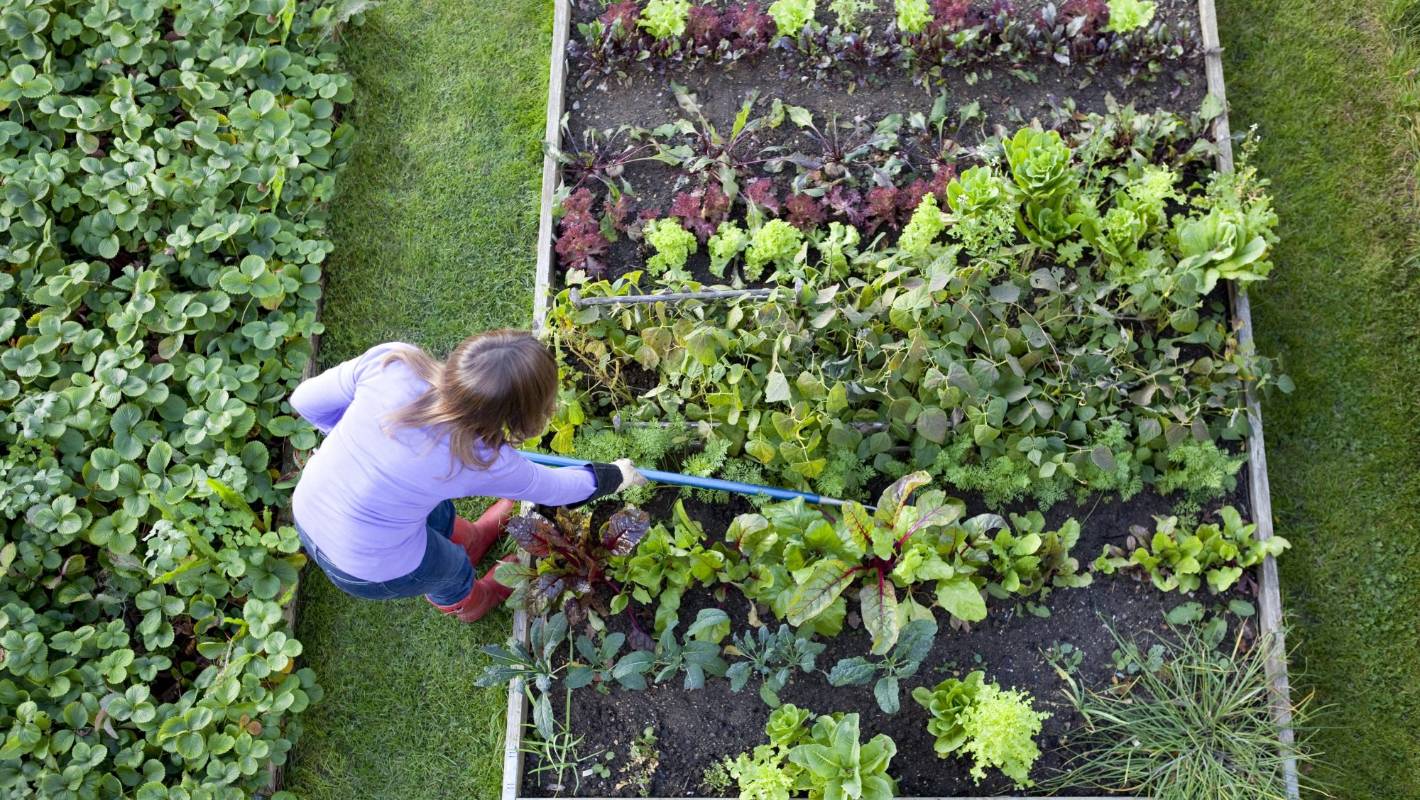
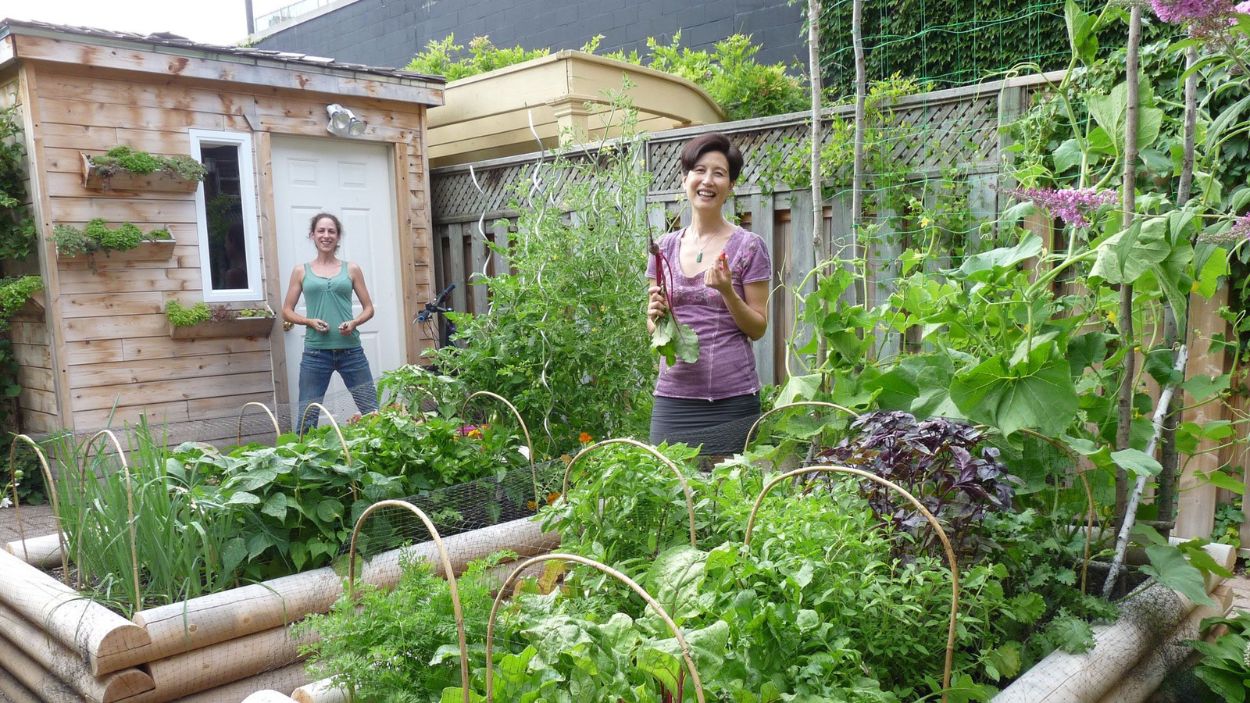
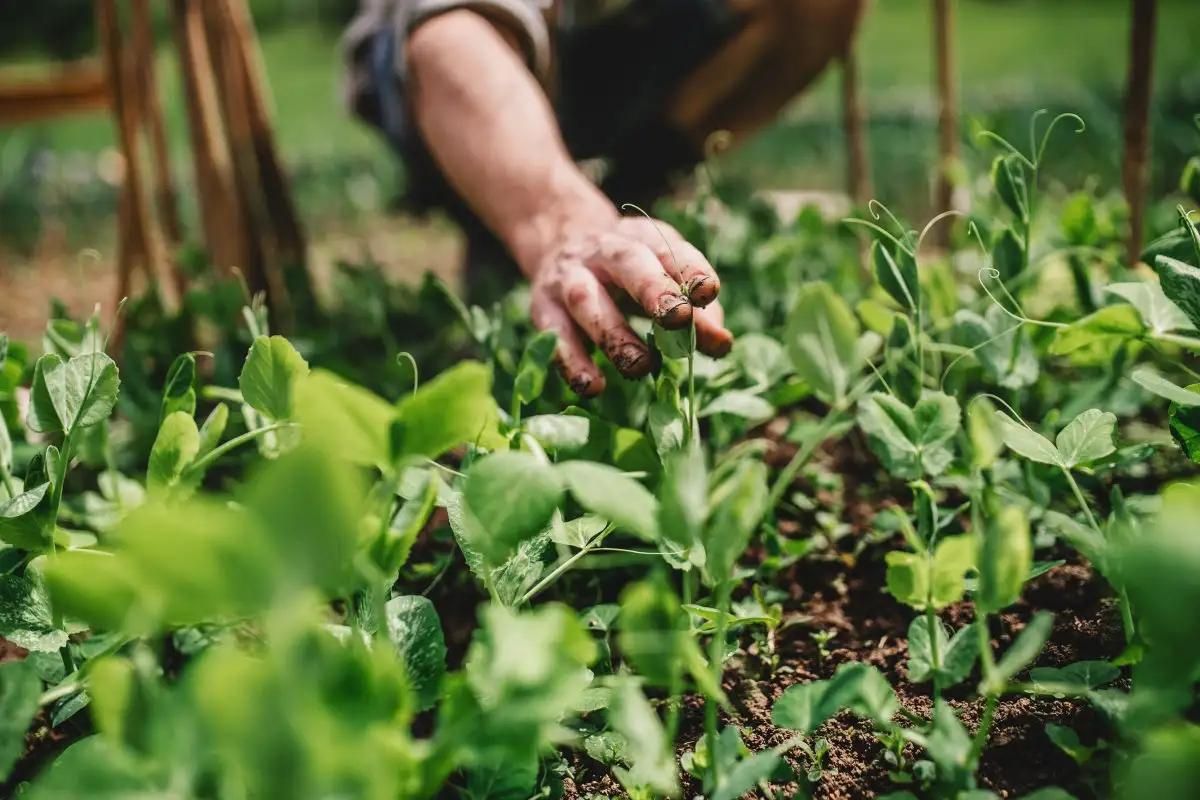
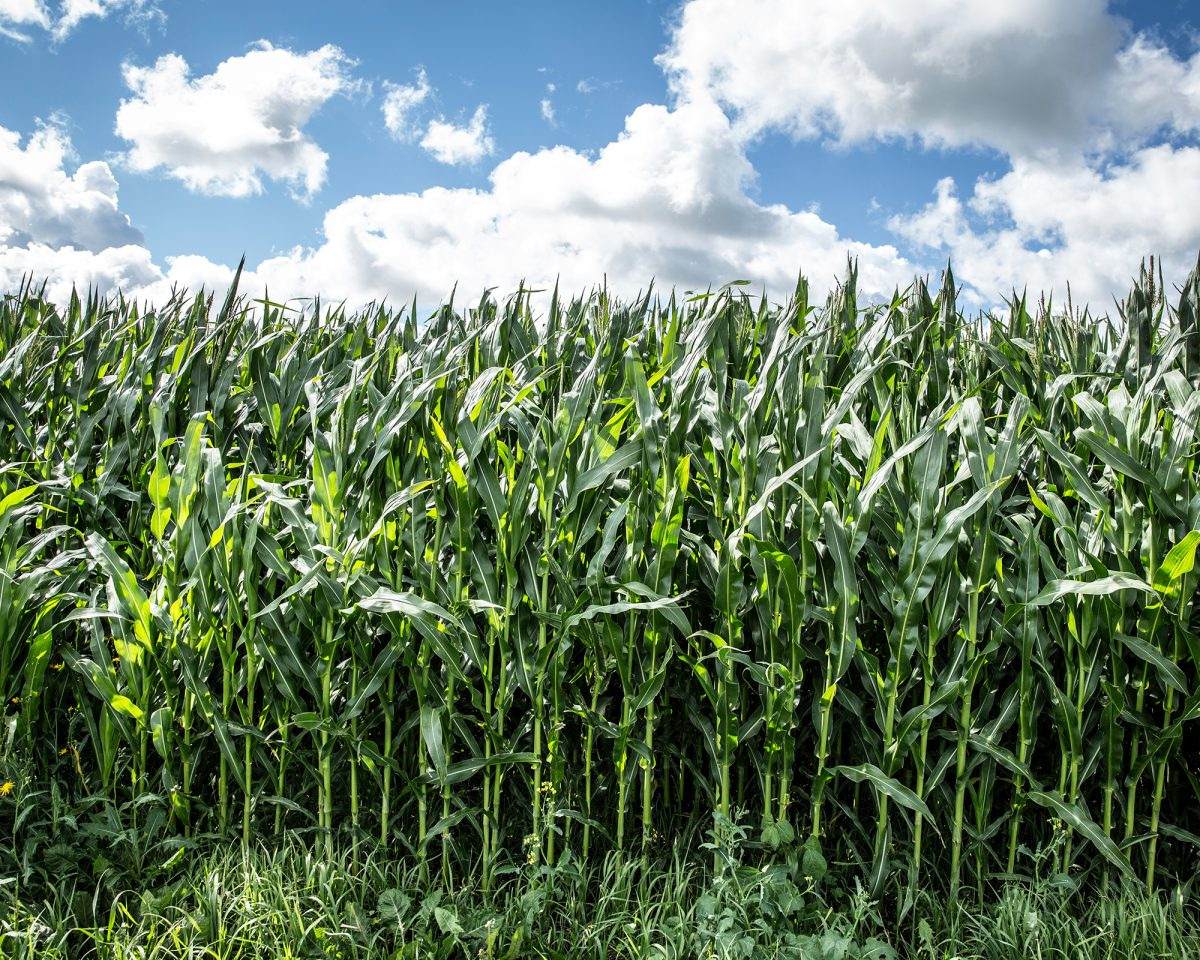
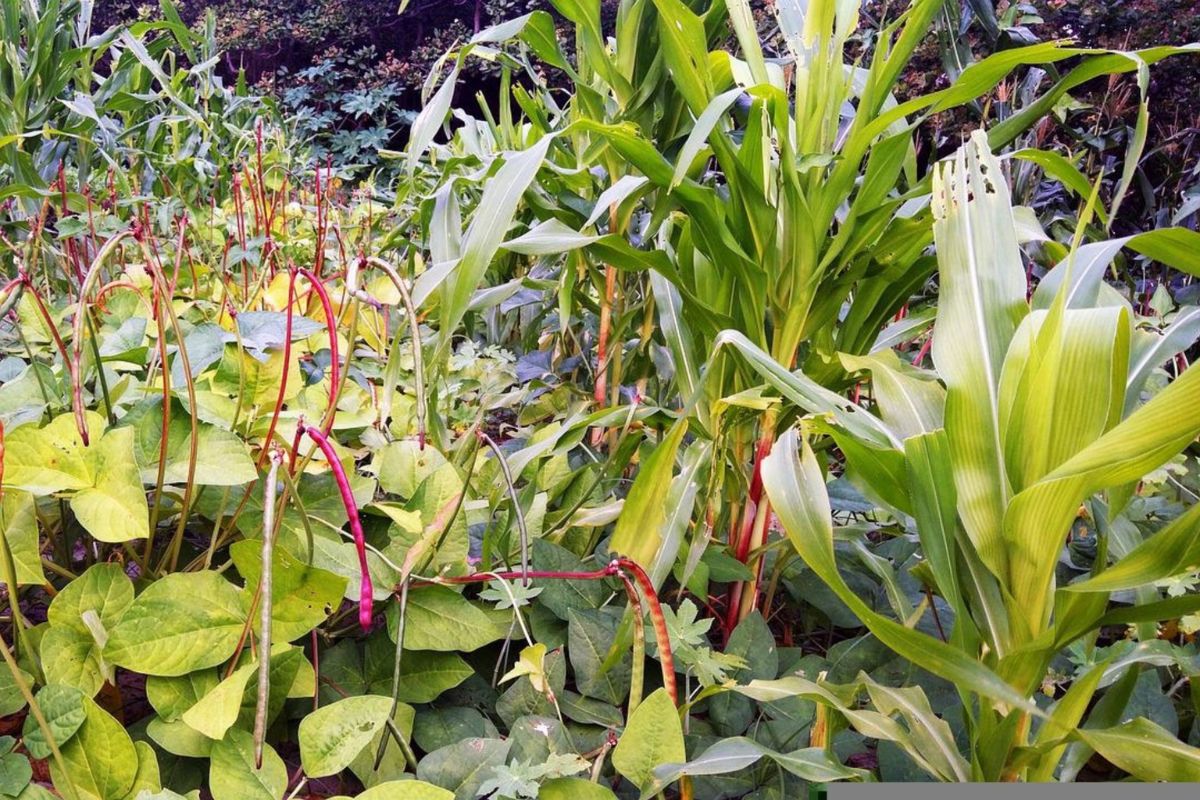

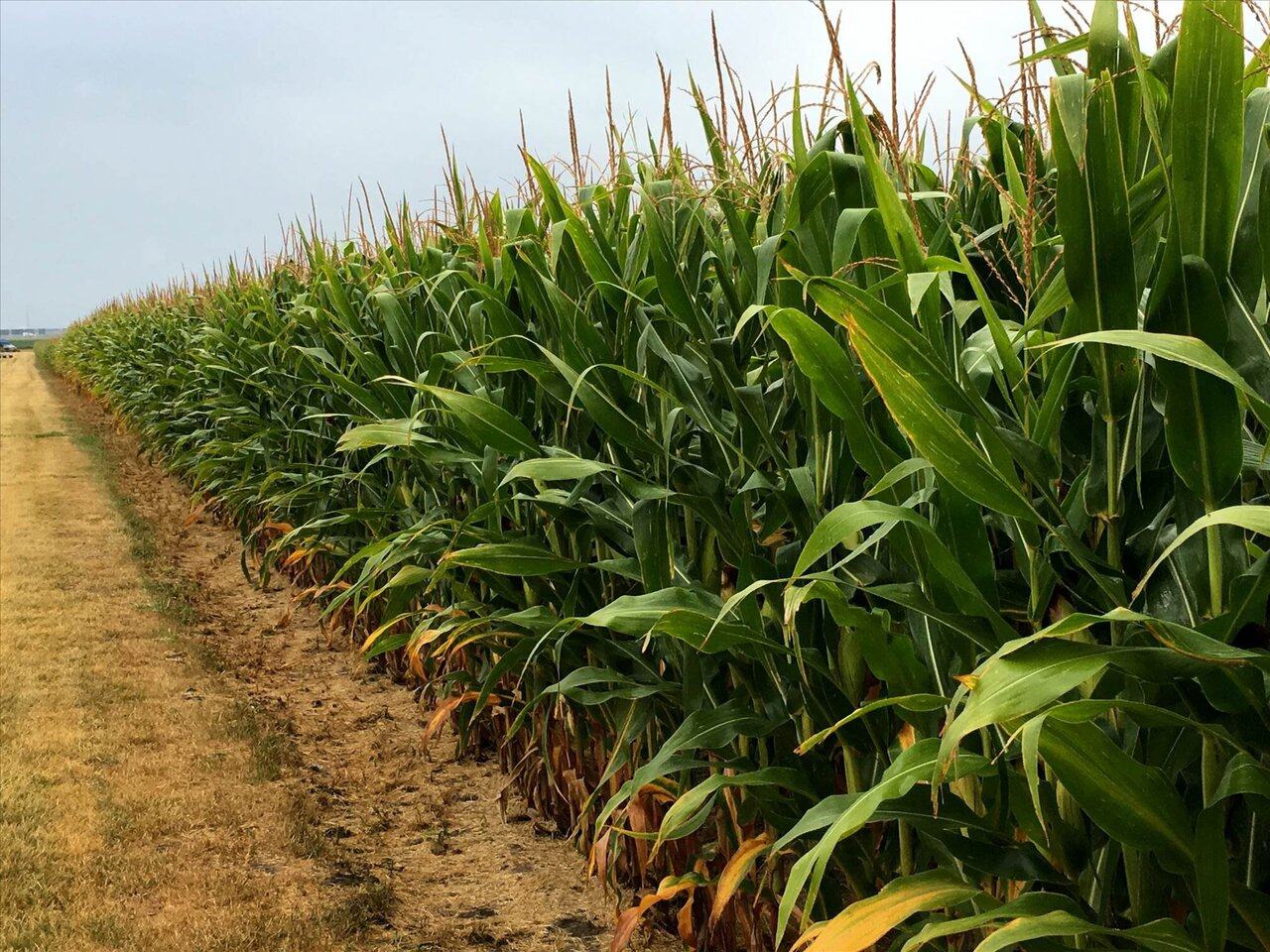
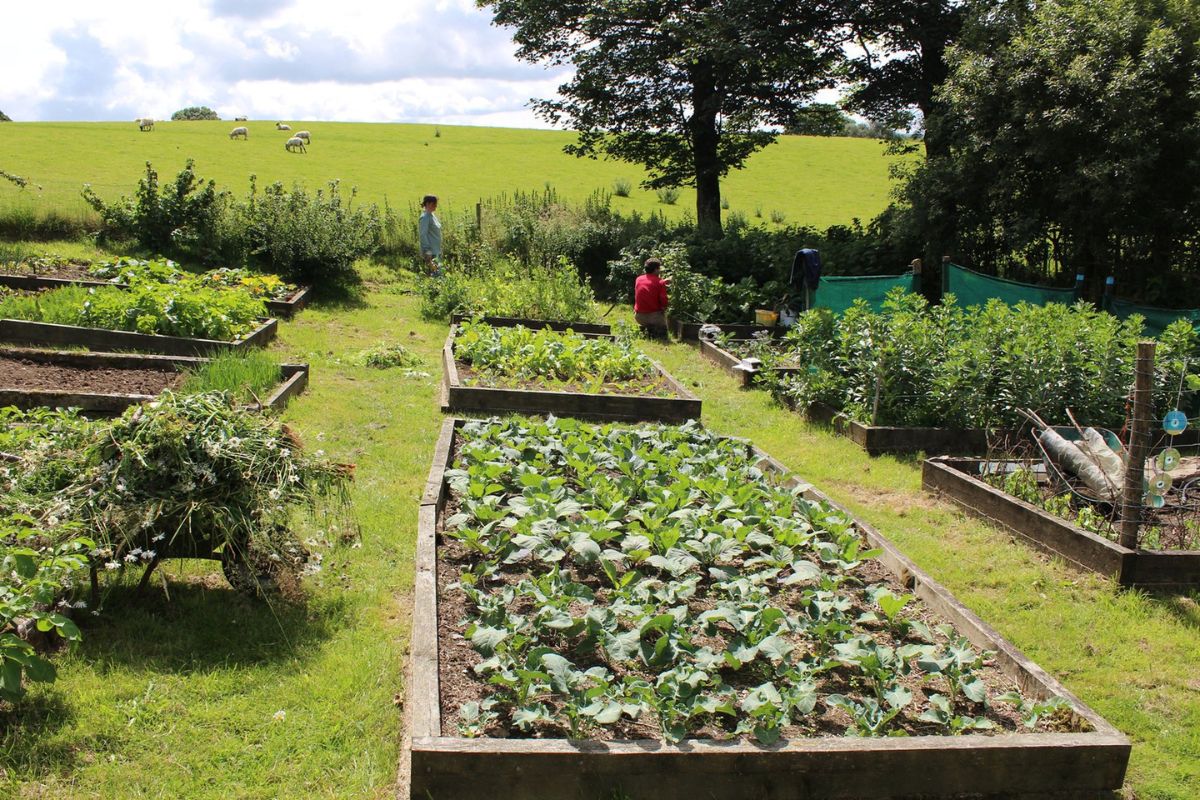
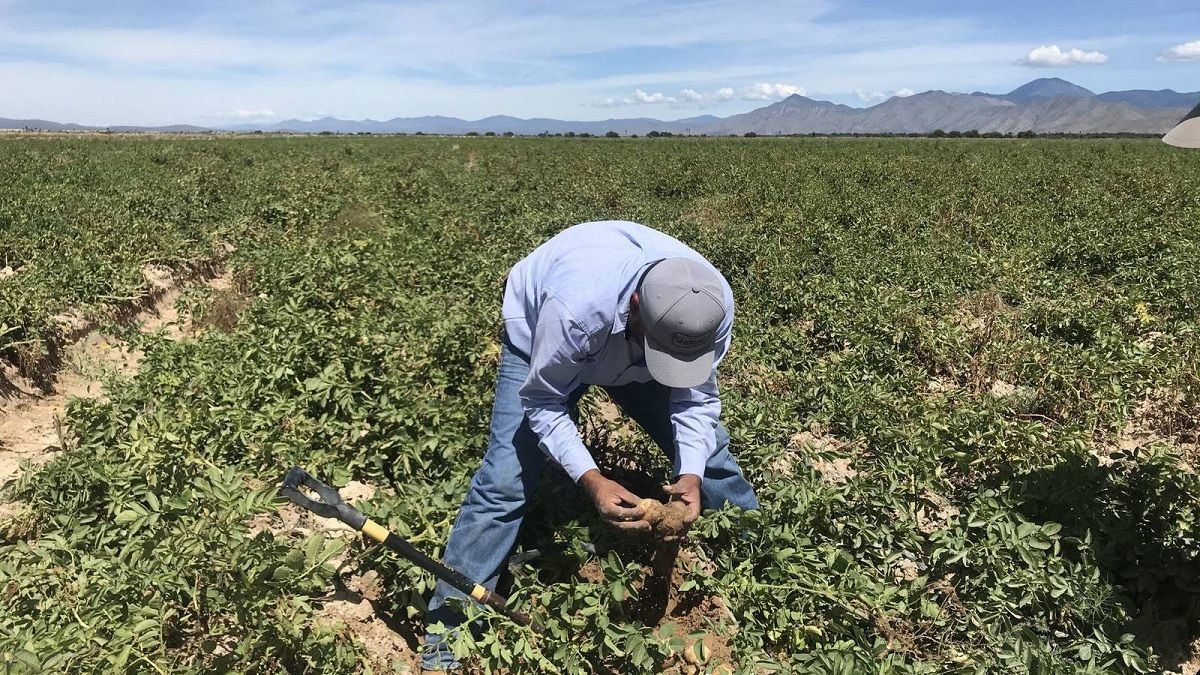

0 thoughts on “What Is A Good Location To Do Crop Rotation”